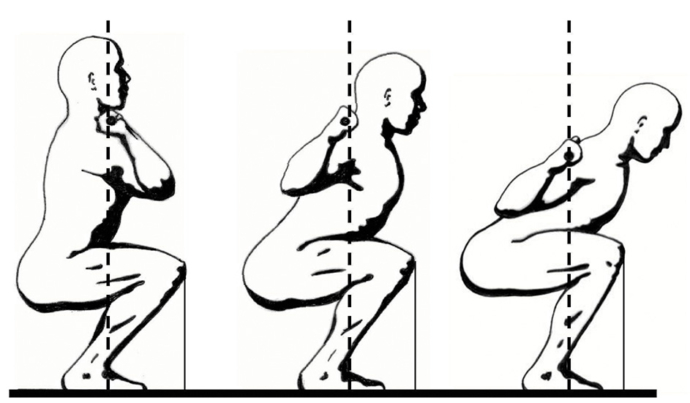Having always admired strength, I took up competitive powerlifting at the age of fifteen as I have mentioned in previous articles. I went on to compete for approximately 15 years and actually worked my way up to national level competition before retiring at age 30. During my years as a competitive lifter, I learned many things about the finer points of strength training. One of the most significant, however, was that you lean where you look.
Powerlifting is a sport consisting of the combined total weight of the squat, bench press, and deadlift. Every powerlifter has a favorite event; in my case, it was the squat, or more accurately, I loved to hate it. Maximal effort squats to greater than 90 degrees of hip and knee flexion and getting back up is extremely painful, somewhat dangerous, and quite a rush. One minor misalignment and you, the weight, and everyone around you can come crashing down which never ends well.
To keep this worst-case scenario from happening everything needs to be in perfect alignment starting with head position. You can place the bar anywhere you want, but if the head is not optimally positioned nothing else matters. The neck should be slightly extended so that the head tilts up just a bit. This is accomplished by having the lifter look up, just above the horizon or neutral line of sight. If the line of sight drops just a little, the head will tilt forward, and then the entire kinetic chain breaks down. At this point, it is likely someone will go to the hospital.
The same is true in everyday life. You lean where you look. Sitting in a cubicle and grinding away the hours tapping on a keyboard takes its toll on the human body. A poorly designed workspace can make things even worse. Things like a monitor that is set too low, an ill-fitting chair, or even poor lighting can all contribute to poor posture and have a negative effect on the rest of the body.
Poor posture often begins with the head. Chronic forward head tilt either from an injury or from intentionally protracting the head (straining forward) to improve proximity to an object such as a computer screen can cause excessive muscular tension. Such tension can disrupt the vertical stability of the head and neck. Like dominos, serial distortion patterns emerge throughout the entire spinal column and its musculature.
Each of the muscular sub-systems is affected. For example, beginning with a forward tilt of the head to better view a monitor that is positioned incorrectly, the cervical spine (neck) is flexed, removing much of the natural cervical lordosis (natural curve of the neck). The thoracic region (mid-back) continues to flex but is now stretched past a normal position and kyphosis (an opposing curvature) in this region is exaggerated. At this point, the weight of the entire torso has shifted forward, flexing the hips and tilting the pelvis forward, thus removing much of the natural lordosis in the lumbar region.
The take away here is that the structures of the body function together; almost never in isolation. When a misalignment becomes chronic, muscle length changes and the role of surrounding structures lose optimal function and perpetuate a viscous cycle of unhealthy tightening and stretching. This cycle frequently leads to pain which, in some cases, may necessitate medical treatment. All of this can be avoided however if we keep the whole body in mind when we are doing any activity where we will be spending a lot of time. Whether we are working at a desk, driving a truck, playing a sport, or doing anything that is repetitive we need to remind ourselves that our body is like any structure. Just like a building or tree, if it leans too long and too far it will collapse. So, maintain proper posture beginning with head and neck alignment and remember that you lean where you look.





Leave a Comment
Your email address will not be published. Required fields are marked with *